- Matching (Score)
- Our verdict
- Competing TVs
- TV appearance
- Where to buy
- Contrast and black detail
- HDR effect quality
- Factory color reproduction
- Color reproduction after calibration
- Smoothness of tonal transitions
- Image scaling and smoothness of tonal transitions
- Blur and motion smoothness
- Console compatibility and gaming features
- Input lag
- Compatibility with PC
- Viewing angles
- Daytime performance
- TV features
- Apps
- Playing files from USB
- Sound
- Panel details
Samsung S85F (WOLED) Review
S85F / FAU / FAE
Available screen sizes:
Diagonal with a different matrix:

Complete the survey to find out the result
Panel type: WRGB OLED Refresh rate: 120Hz Brand: SAMSUNG Resolution: 3840x2160 System: Tizen Model year: 2025
The Samsung S85F model is a true enigma in the OLED television market. While the 55-inch variant (QD-OLED) has gained fame thanks to its proprietary quantum dot technology, the other sizes – 65, 77, and 83 inches – utilise a WOLED panel, supplied by LG Display. This raises the question that every potential buyer must ask themselves: is the S85F one model or two different machines? You will find out in this review!

SAMSUNG S85F - Our verdict
7.7
Overall rating
The Samsung S85F in the tested version with a WOLED panel is a television that must be judged primarily in light of its price. True to organic technology, it offers perfect, almost ideal blacks and infinite contrast in cinematic conditions. This feature alone will impress the majority of buyers, especially those upgrading from any LCD television. However, it cannot be denied that in a direct comparison with the 55-inch QD-OLED variant, the WOLED version shows some weaknesses. It is slightly darker, particularly in bright full-screen scenes, and offers noticeably poorer viewing angles. Nonetheless, the other advantages remain intact. Motion fluidity is at a high level—the 120 Hz panel handles both sports and action films excellently. And if someone plans to connect a console to the S85F, they will enjoy a full set of benefits: low input lag, variable refresh rate, Game Bar, and full HDMI 2.1 support. In everyday use, the Tizen system assisted us—closed, yet extremely polished. It responds quickly, offers a rich selection of apps, and features like AirPlay and voice control make it hard to find anything more complete in this category. Indeed, the S85F in the WOLED variant is not a perfect television and yields to its sibling with the QD-OLED panel. However, its biggest weapon is its absurdly low price. The purchase cost is downright laughable in relation to the capabilities offered. It is still a great and, above all, inexpensive OLED that will be one of the best and most cost-effective televisions on the market for a vast array of users.
Advantages
Revolutionary black and contrast
Great picture in SDR and HDR content after calibration
Very good motion fluidity – 120 Hz OLED panel
Rich set of features for gamers: VRR, Game Bar, low input lag
4 HDMI 2.1 ports with full bandwidth of 48 Gbps
Advanced and smoothly operating Tizen system
Solar Remote with multiple capabilities
Disadvantages
No recording function on USB and PiP
No Dolby Vision
No HGiG* function
Worse viewing angles, colour gamut coverage and lower brightness than the variant with QD-OLED panel
*This function disappeared with software update 1110.7 – we are monitoring this situation regularly.
Movies and series in UHD quality
7.9
Classic TV, YouTube
8.6
Sports broadcasts (TV and apps)
8.5
Gaming on console
8.7
TV as a computer monitor
7.6
Watching in bright light
5.3
Utility functions
7.3
Apps
8.7
Sound quality
7.2
Complete the survey to find out what fits your preferences
SAMSUNG S85F - Competing TVs in this price range
SAMSUNG S85F - TV appearance
HDMI inputs: 0 x HDMI 2.0, 4 x HDMI 2.1 (48Gbps) Other inputs: Toslink (Optical audio) Outputs: Toslink (Optical audio), eARC (HDMI), ARC (HDMI) Network Interfaces: Wi-Fi 2.4GHz, Wi-Fi 5GHz, Ethernet (LAN) 100Mbps
Build quality: Good
Stand type: Legs
Bezel color: Graphite
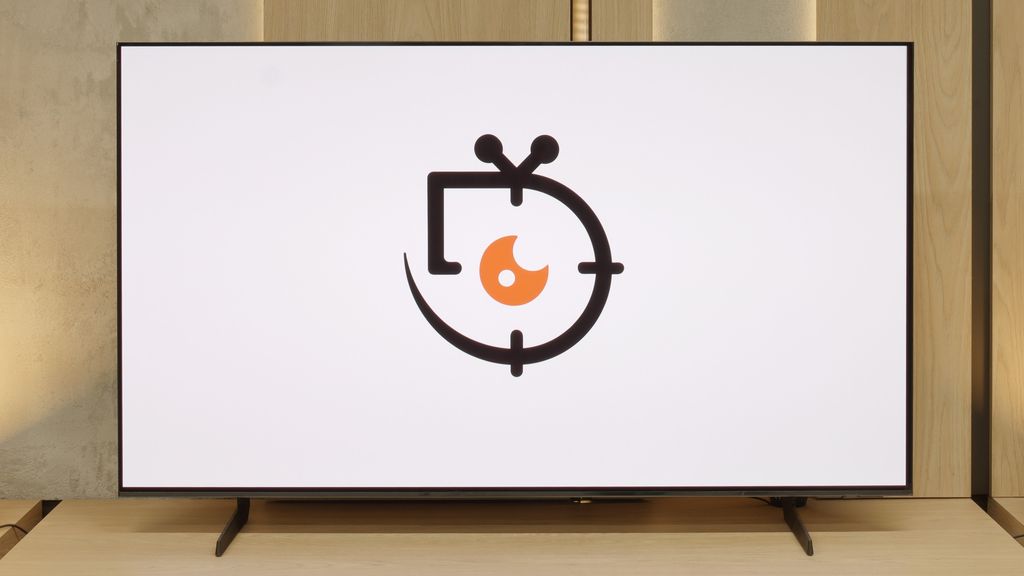

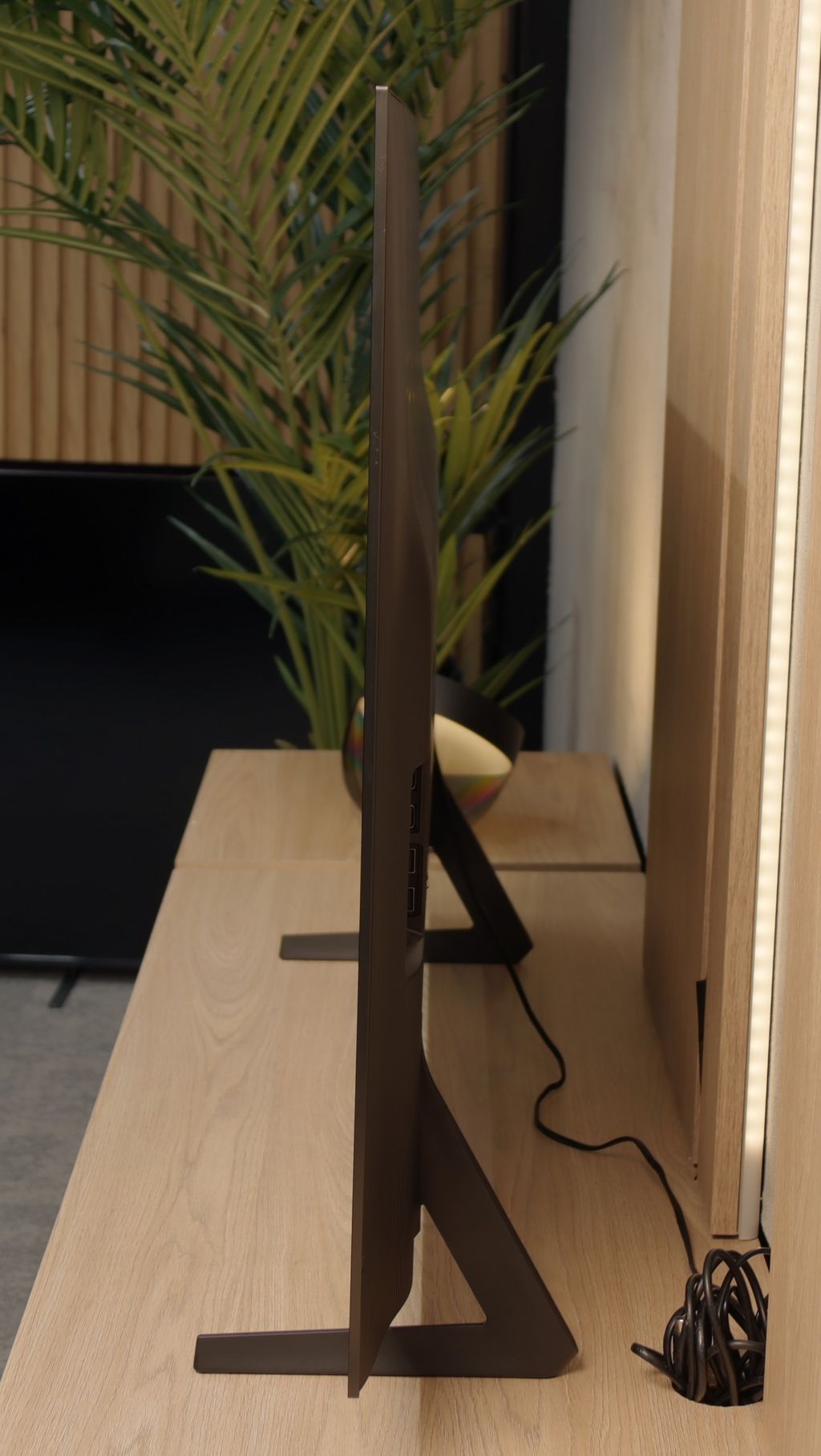
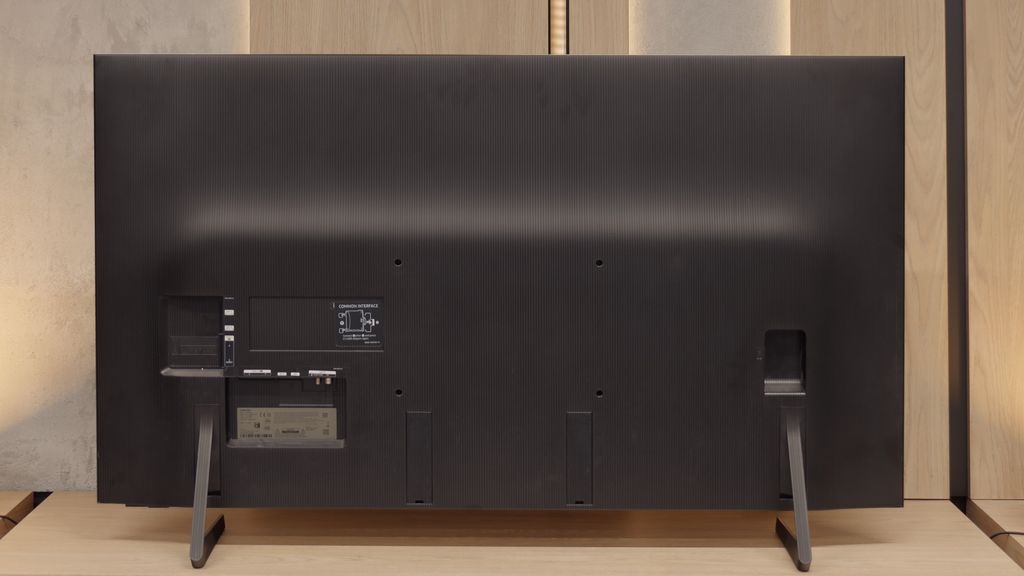
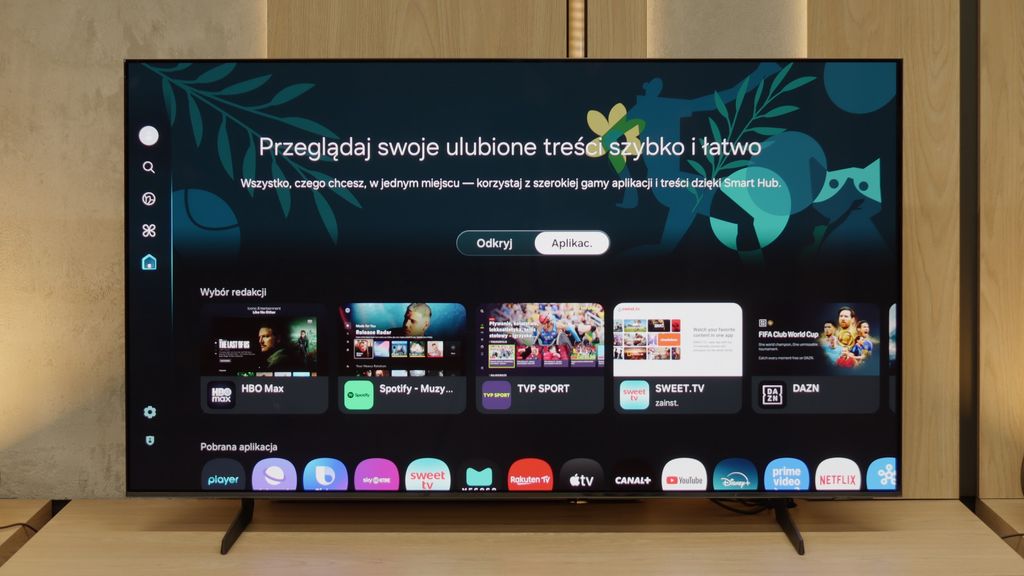
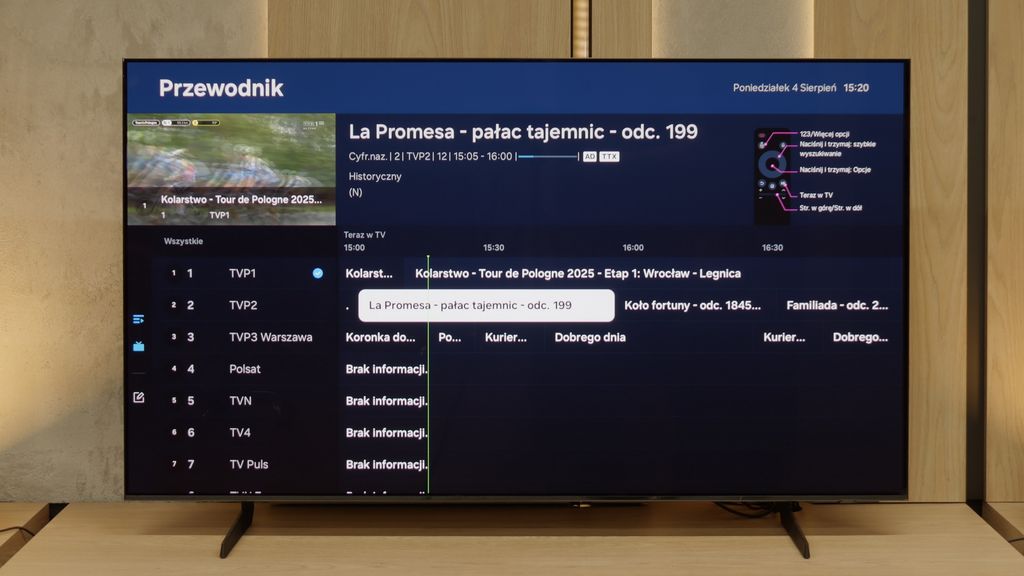

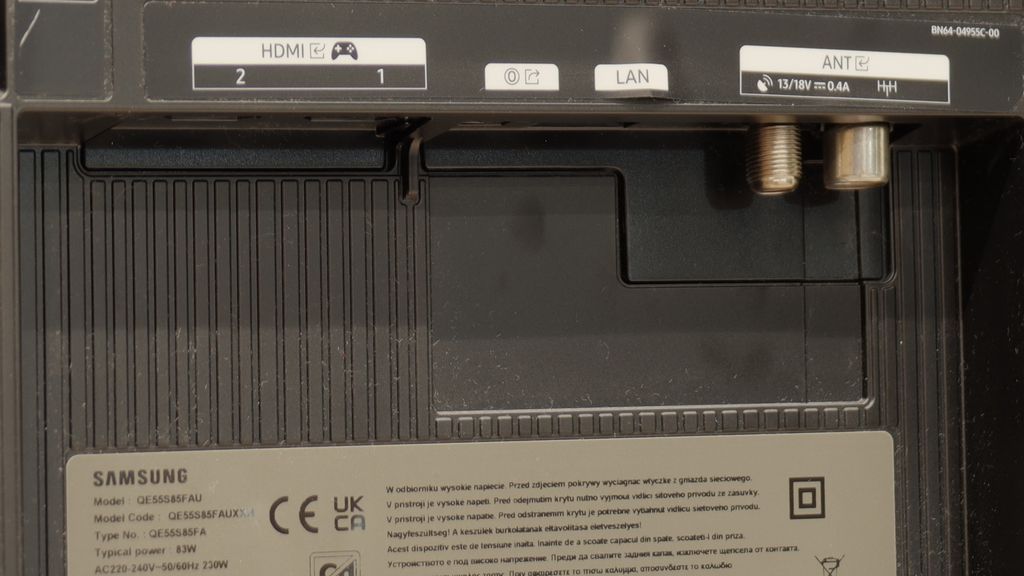
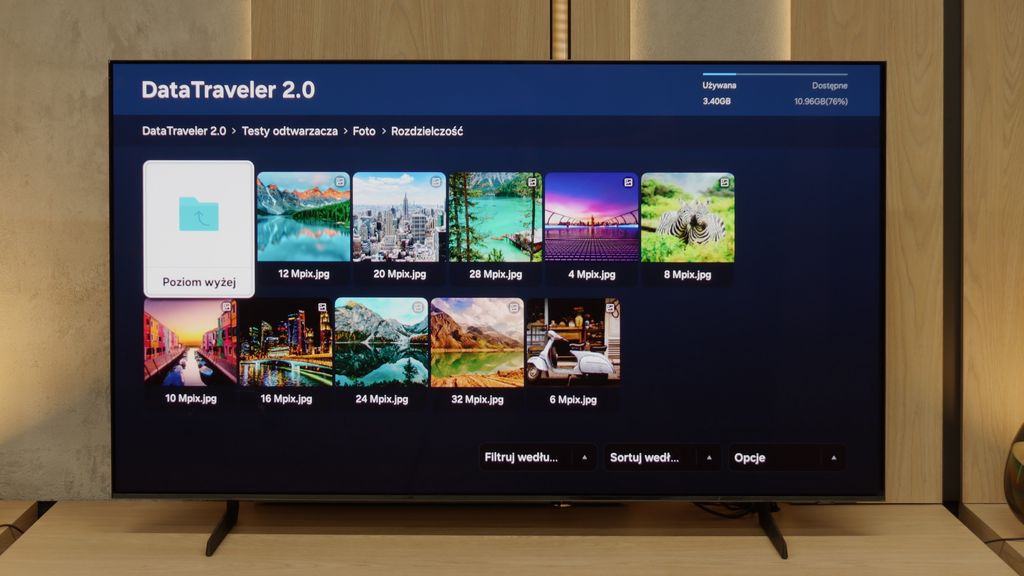
Stand: Base adjustment
Flat design: No
Accessories: Stand
When we look at the Samsung S85F, we immediately see that stylistically we are sticking to a proven path – it looks practically the same as the previous model S85D. Interestingly, the designers have moved away from market trends and have not made it a typical OLED, which is that super-slim panel that suddenly has a protruding lump on the back for the electronics. Instead, the S85F has a cohesive, rounded shape – it appears as one, smooth block, which looks neat and modern from the side. Although we are aware that this is not a high-end model, we think it doesn't look cheap. The only thing that immediately reveals its lower position in the OLED television series is the plastic legs. We may not consider them the height of elegance, but Samsung has ensured they are practical. We can mount them at two different widths, making it easier to fit this television on a narrow cabinet. That's a well-thought-out compromise.
Buy at the best price
Select size:
SAMSUNG S85F - Contrast and black detail
10/10

Result
∞:1

Result
∞:1

Result
∞:1

Result
∞:1

Result
∞:1
Visibility of details in the lights:

When it comes to blacks and contrast, we must be honest – this is the area where the differences between QD-OLED and WOLED panels are virtually non-existent under typical cinematic conditions. We confirm with full responsibility: the Samsung S85F equipped with a WOLED panel achieves amazing and unparalleled results in this respect. Regardless of the scene being watched – whether it's a dynamic action movie or a dark thriller – we receive infinite contrast and perfect black that we expect from any OLED television. These are results that can impress even the most discerning cinephiles. It is worth emphasizing that such deep, absolute black can only be offered by televisions with organic panels. In cinematic conditions, as we see in our measurements, the level of black luminance is zero. So, if you dream of a screen that can "switch off" the light in a scene just as effectively as an independent cinema in a dark room, we are pleased to state that the S85F, also in the WOLED variant, is one of those televisions.
Halo effect and black detail visibility:
SAMSUNG S85F - HDR effect quality
5.9/10
Supported formats: HDR10, HDR10+, HLG Color gamut coverage: DCI P3: 97.0%, Bt.2020: 70.7%
Luminance measurements in HDR:

Result
672 nit

Result
673 nit

Result
718 nit

Result
670 nit

Result
276 nit
For the majority of the time, let's say in 90% of film scenes, viewers will see virtually no difference between the versions of the S85F. When small, but very bright light points appear on the screen – a lantern in a dark alley, an explosion, the sun breaking through the clouds – this WOLED panel (similar to the smaller S85F) performs exceptionally well. Our measurements indicated a peak brightness of around 750 nits. We can state with full confidence: this is a great result that guarantees fantastic HDR effects. The problem arises in a very specific, uncomfortable situation for any OLED. We're talking about the moment when the entire screen must light up at full power brightly. Examples include a scene with a white background, a skiing scene, or our test sequences (5) from the film The Meg. And here, unfortunately, the results diverge significantly to the detriment of the variant with the WOLED panel. Our measurement equipment was able to register a maximum brightness of around 250 to 300 nits in such conditions. To be clear: the same model with a QD-OLED panel in the same test is nearly twice as bright. The second matter: colours. And here, we also have to be honest – QD-OLED has a structural advantage. Why? It's simple. QD-OLED generates colours from three components (red, green, and blue) and does not require an additional white subpixel. The WOLED panel we are testing here uses that white subpixel mainly to boost overall brightness. The effect is that QD-OLED is able to show a slightly wider colour palette and the colours are somewhat "purer". But to be clear: it's not that the colours on this WOLED panel are bad! On the contrary, they are really very good. The coverage of the DCI-P3 film palette at 97% and 71% for the broader BT.2020 palette is still high-end. We just need to honestly admit that this few percentage points of advantage in colour coverage lies with QD-OLED technology and may be noticeable in very specific moments.
Scene from the movie “Pan” (about 2800 nits)

Scene from the movie “Billy Lynn” (about 1100 nits)

When it comes to the adaptation of the image itself, it is important to highlight a significant fact. Although measurements showed a lower brightness of the panel in the aforementioned, extremely bright full-screen scenes, there is little to criticise regarding the overall picture quality in HDR10 format on the S85F. The material displayed remains very detailed. We also noticed that in most cases, the television adapts very well and independently to the characteristics of the given scene, effectively managing the available brightness.
HDR luminance chart:
HDR luminance
Luminance of RGB colors
There are, however, scenes where it is clearly evident that the overall brightness of the television and its standalone image adaptation (under the standard HDR10) are lacking. An ideal example is the test scene with horses on a white meadow. We observed a colossal difference in favour of the dynamic metadata of the HDR10+ format, which the Samsung S85F naturally supports. Of course, there will be voices claiming it would be better to have support for Dolby Vision on board. However, considering the growing popularity of the HDR10+ format on various streaming platforms – recently, for instance, on Netflix and Disney+ – it is hard to view the lack of DV as a serious drawback. Moreover, the differences in the final image between these two competing formats are often merely cosmetic at this stage of technological development.
Static HDR10

Dynamic: HDR10+

Factory color reproduction
5.5/10
When it comes to factory colour reproduction, our test sample in SDR mode suffered from a slight deficit of red and yellow colours. This resulted in a faint yellowish tint visible in shades of white. However, this is not the biggest problem with the S85F. As with the variant with a QD-OLED panel, the main issue with this model is the way it presents HDR content. When we look at the EOTF curve chart, it is easy to see that the television has quite significant problems with strong image clipping. Such behaviour causes the final image in many scenes to become very unnatural.
Color reproduction after calibration
9/10
After conducting calibration in Filmmaker mode, we managed to eliminate most of the unwanted effects. In SDR content, the television performs excellently, with its colour reproduction errors not exceeding a value of 2, which is an outstanding result. HDR content looks slightly worse, though still very good. Although we were able to eliminate the significant unnaturalness of the image caused by the excessively high EOTF curve, the most discerning observers may notice that it is not perfectly aligned. It runs slightly below the reference curve, which would suggest that the S85F has minor difficulties in showcasing all the details in the image. We must emphasise here that it is very unlikely that the average viewer will notice any shortcomings in the image. The final effect after calibration is evaluated as exemplary.
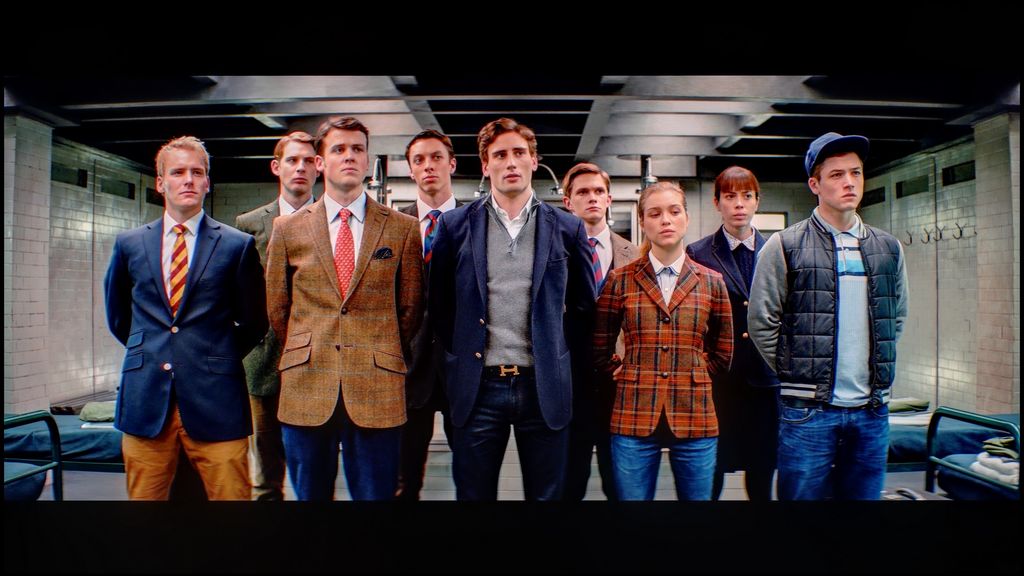

SAMSUNG S85F - Smoothness of tonal transitions
7.3/10
Another drawback of the S85F version with the WOLED panel, noticeable compared to the QD-OLED variant, is the quality of the fluidity of tonal transitions. In very bright moments, it is evident that the colour blending is not perfect, and sometimes it can be spotted with the naked eye. Although the overall quality of gradients is still good, certain issues with the panel produced by LG Displays are apparent, which are not as noticeable in competing panels (QD-OLED).
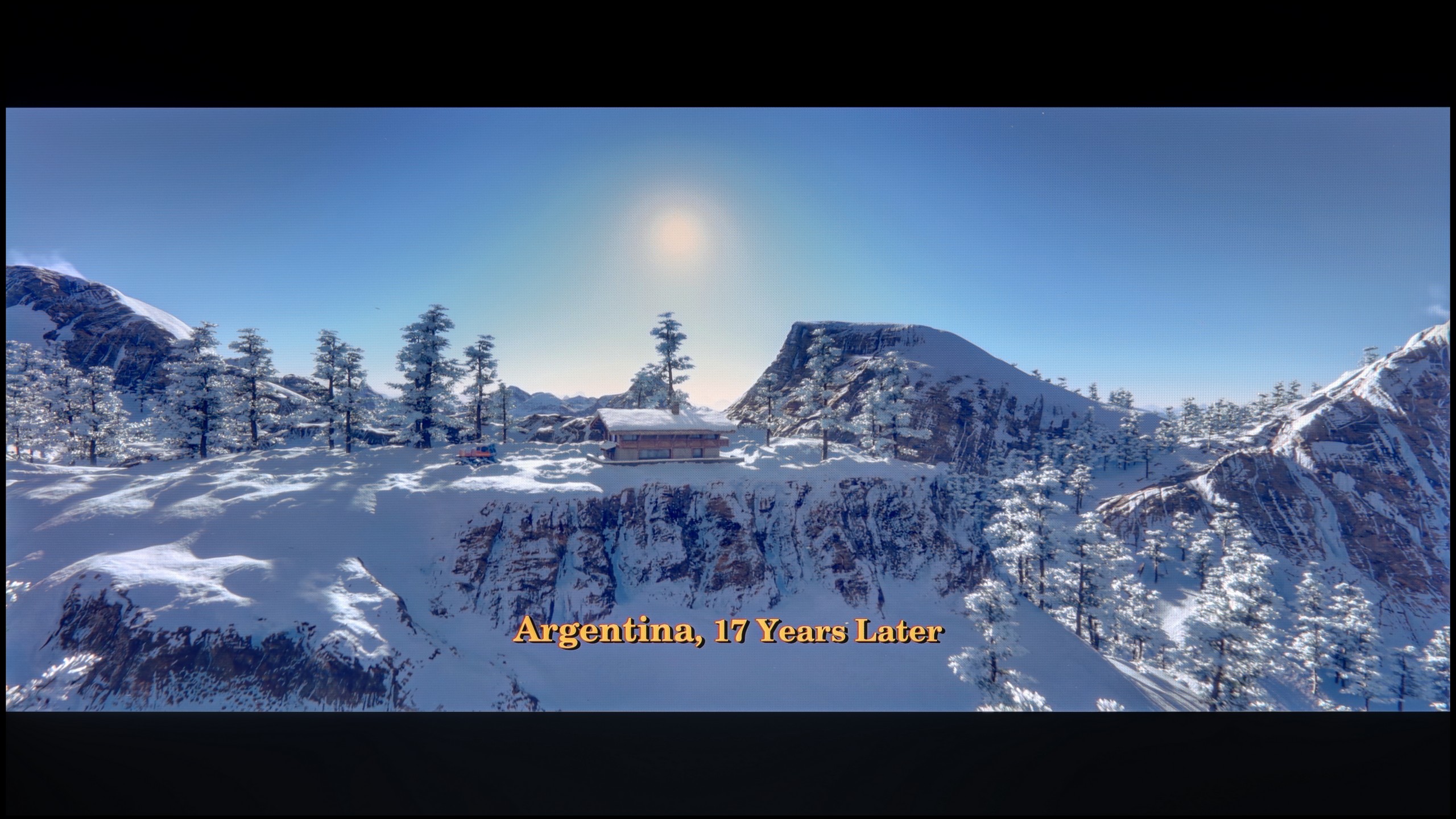

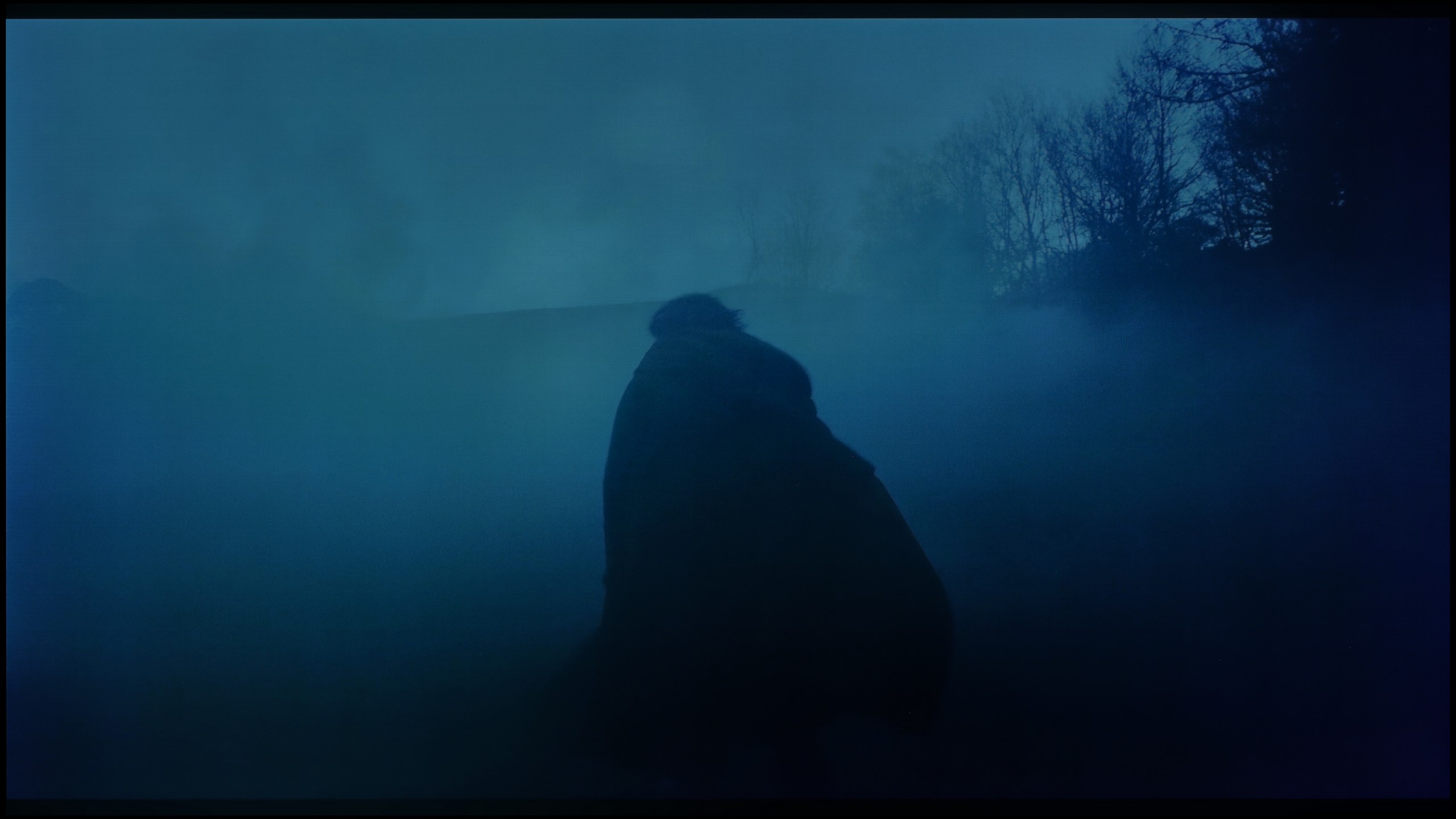
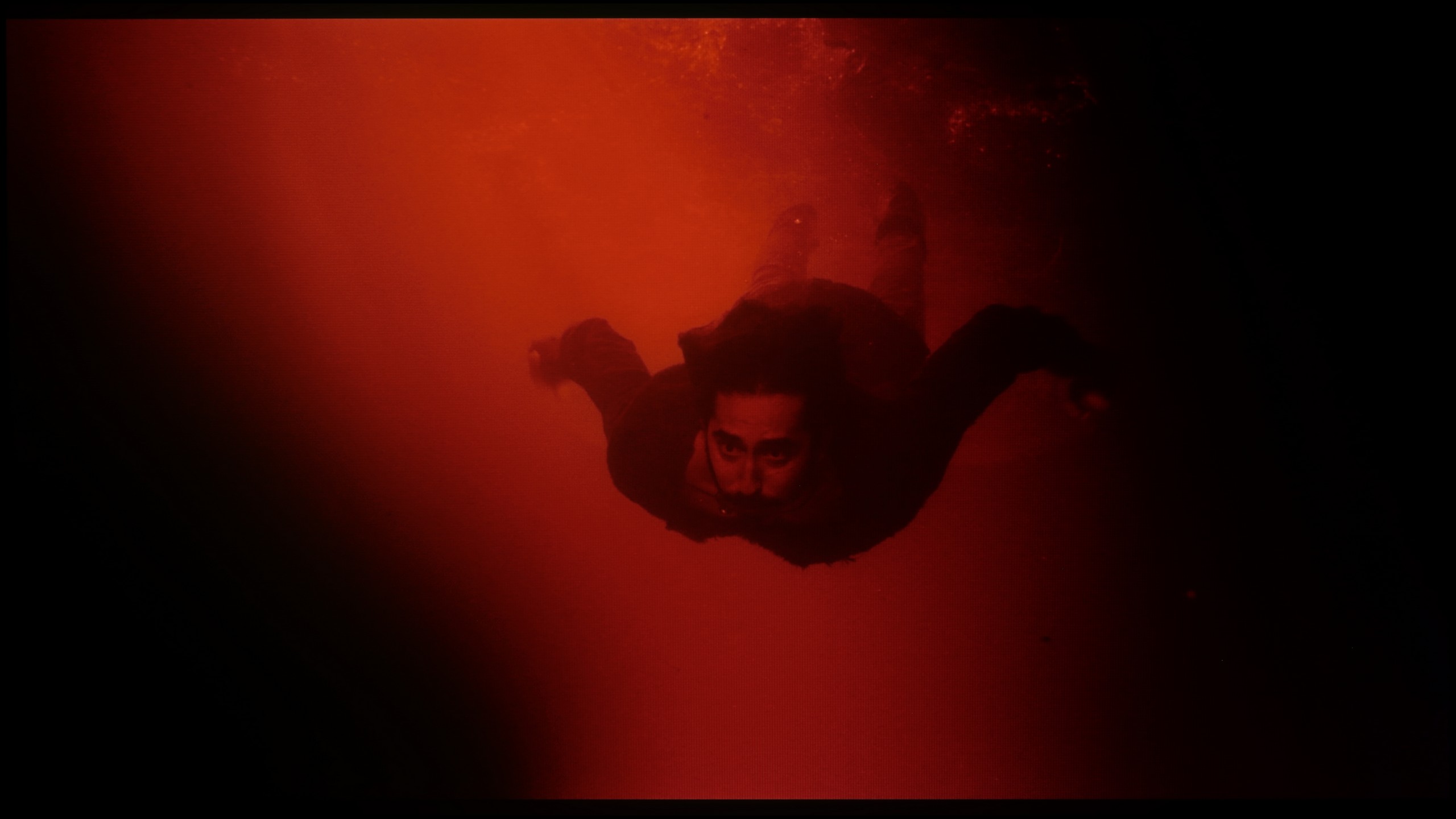




Image scaling and smoothness of tonal transitions
7.5/10
Smooth transition function
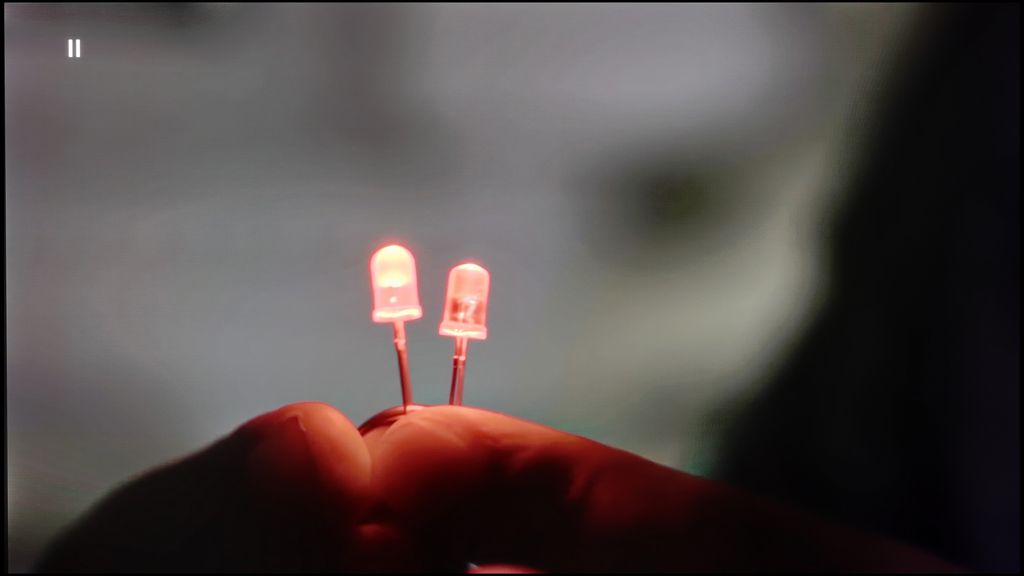
Image without overscan on the SD signal

The processing of tonal transitions (gradients) in the S85F is at a high level. The television effectively handles posterisation (the "banding" effect of colours), even with heavily compressed content, e.g., from streaming services. However, using this feature requires a certain compromise. We noticed that the noise reduction algorithm is quite aggressive – even at the lowest setting, it can eliminate natural film grain, which for many viewers is part of the film's aesthetics. The "Standard" setting seems to be a happy medium, not causing a noticeable loss of important details, which is why we can recommend it. However, we advise against using the "High" level, which, in addition to noise, also removes desirable details such as texture or structure of objects on the screen.
The upscaling process of lower resolution content works very well in the S85F. The image is sharpened and clear. The only minor imperfection we managed to observe is occasional, subtle aliasing on the edges. The television still exhibits characteristics typical of this manufacturer, namely active "overscan" (slight image enlargement). It is worth keeping this in mind, especially when watching older content, as it may result in minimal clipping of the original frame.
SAMSUNG S85F - Blur and motion smoothness
8.5/10
Maximum refresh rate of the panel: 120Hz
Film motion smoothing option: Yes
Blur reduction option: Yes
BFI function 60Hz: Yes, 60Hz (image flickers)
BFI function 120Hz: No
Brightness drop with BFI: 50%

S85F is a model with impressive speed. The use of a 120 Hz OLED panel ensures that dynamic scenes, both in games and during sports broadcasts, meet expectations: smoothly, sharply, and without loss of clarity. A key role here is played by the instant response time of the pixels, which is a natural advantage of OLED technology. Frame transitions are instantaneous, and the image remains clear even during the fastest camera movements. Moving objects, such as a ball on the pitch or a car in a chase scene, are clear and devoid of the characteristic motion blur associated with LCD panels (the so-called "ghosting").
Blur (native resolution, maximum refresh rate):



Blur (BFI function enabled):
Image flickers in this mode



This is precisely the level of fluidity we expect from a high-end OLED television – without compromises in motion representation. At the maximum refresh rate, blurring does not occur, so the optional BFI (Black Frame Insertion) feature can be regarded more as a curiosity. When activated, the image unfortunately starts to flicker, and its operation is limited to 60 Hz.
SAMSUNG S85F - Console compatibility and gaming features
7.8/10
ALLM: Yes
VRR: Yes
VRR range: 48 - 120Hz
Dolby Vision Game Mode: No
Correct implementation of HGIG: No
1080p@120Hz: Yes
1440p@120Hz: Yes
4K@120Hz: Yes
Game bar: Yes
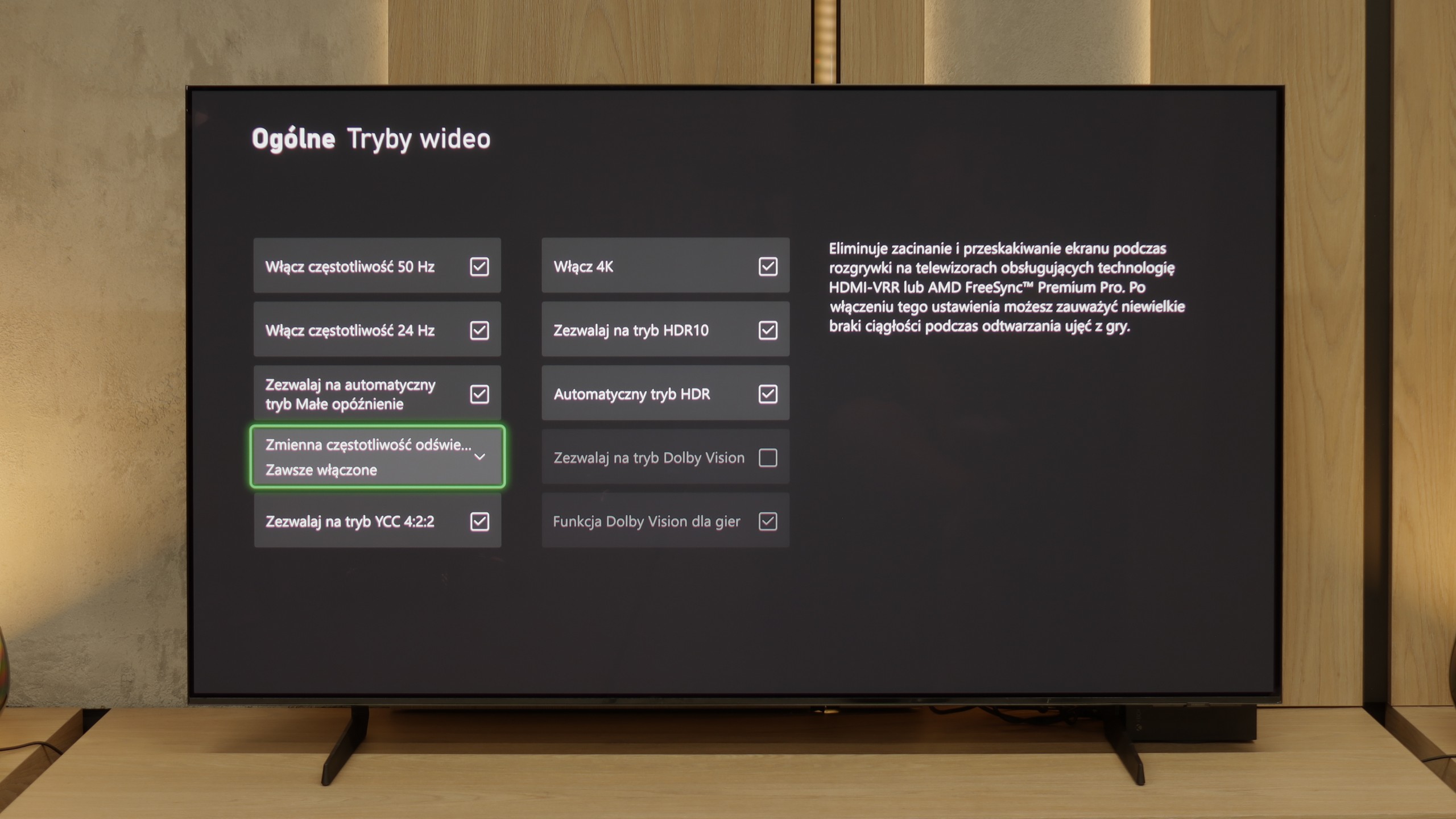
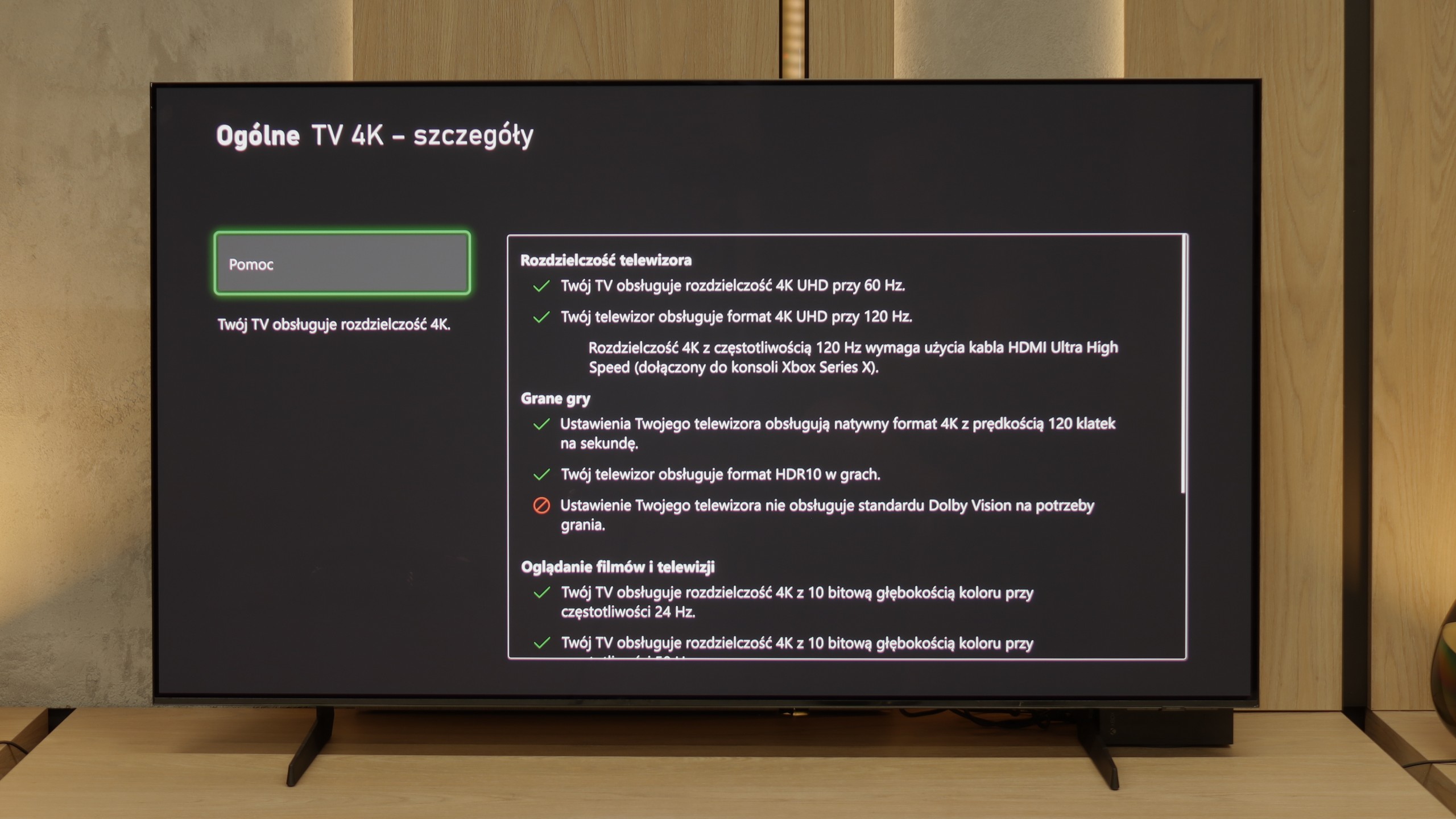
The 85F has practically everything on board to become the dream screen for gaming. It features four full-fledged HDMI 2.1 ports with a bandwidth of 48 Gb/s, support for VRR (Variable Refresh Rate) and ALLM (Auto Low Latency Mode). Additionally, there's a super-detailed Game Bar, which clearly shows all the key parameters. However, the real gem is the Game Motion Plus feature. This motion smoother dedicated to games makes the animation more visually pleasing, while only slightly increasing input lag. This is a rare and well-functioning combination for which Samsung deserves great applause.
Now comes the moment where we must do a bit of complaining. The lack of Dolby Vision in Samsung TVs has become standard, so there's no point in hoping (unless something changes in the future). Unfortunately, it is much harder to explain the disappearance of support for HGiG after one of the software updates. HGiG (HDR Gaming Interest Group) is a key mode that allows for accurate reproduction of brightness in HDR games, according to the creators' intent. Without it, HDR calibration on the console becomes less precise, which can lead to an image that is too dark in the shadows or overly washed out in bright areas. Perhaps Samsung will fix this in the next update – we have high hopes for that. Because if HGiG returns, the S85F will become an almost perfect television for gamers.
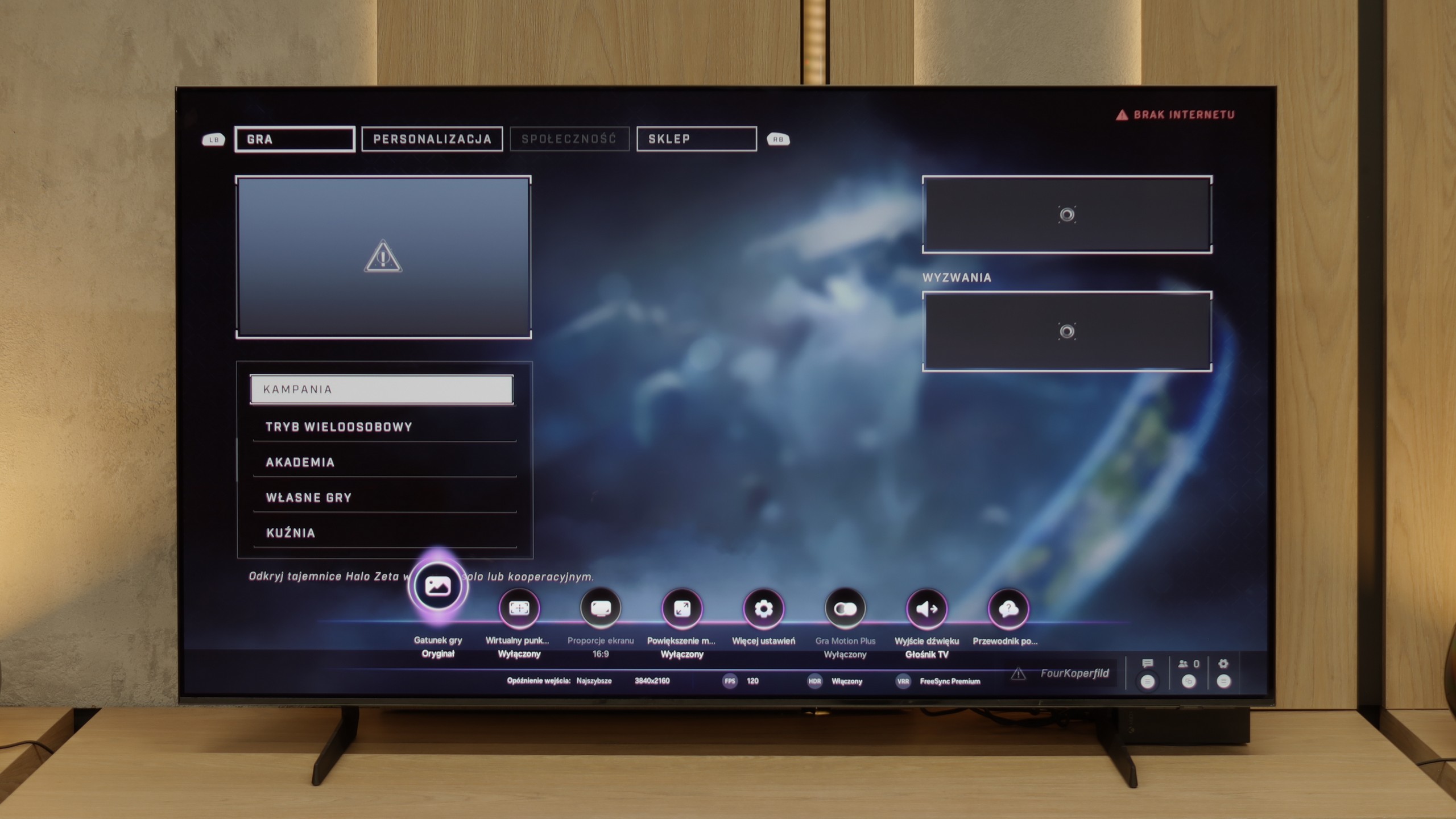
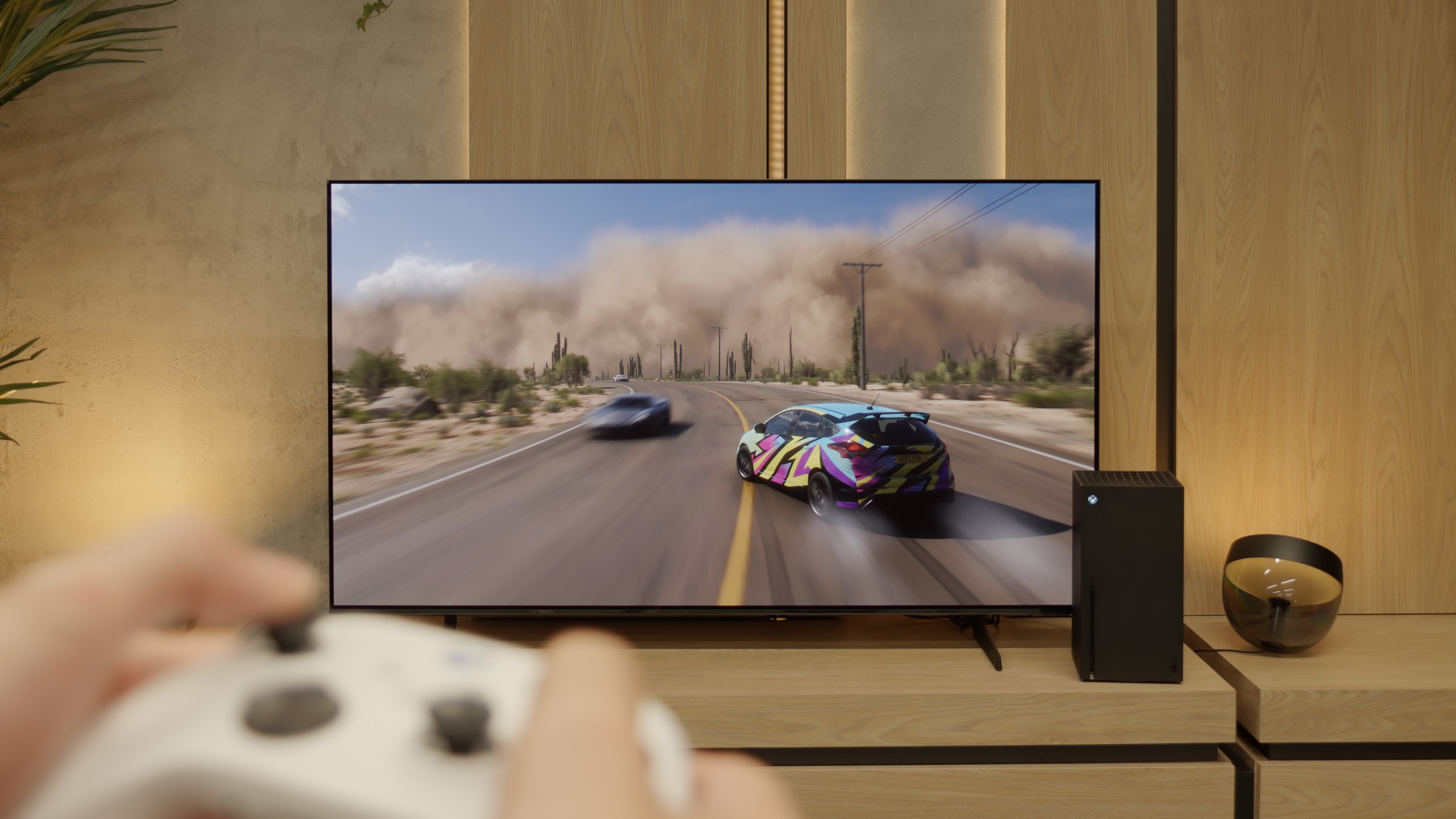

SAMSUNG S85F - Input lag
10/10
In this category, the S85F shows its true colours. The values measured by us – 5 ms for 120 Hz content and around 10 ms for 60 Hz – are results that can be described in one word in the world of televisions: phenomenal. This means that the response to a player's movements is practically instantaneous. Pressing a button on the pad results in action on the screen without any noticeable delay. In dynamic games, where a fraction of a second determines victory or defeat, such values make a huge difference. There is no question of a nervous "waiting" for the image to catch up with our commands. The S85F provides a sense of complete control – and that's how it should be in equipment aspiring to be the perfect screen for gamers.
| SDR | HDR | Dolby Vision |
|---|---|---|
| 1080p60: 10 ms | 2160p60: 10 ms | |
| 1080p120: 5 ms | 2160p120: 5 ms | |
| 2160p60: 10 ms | ||
| 2160p120: 5 ms |

SAMSUNG S85F - Compatibility with PC
7.6/10
Chroma 444 (maximum resolution and refresh rate): Yes
Font clarity: Good
Readability of dark text and shapes: Very Good
Input lag in PC mode (4K, maximum refresh rate): 5ms
Matrix subpixel arrangement: RWGB
Max refresh rate: 120Hz
G-Sync: Yes
And what about connecting to a computer? We rush to answer: the S85F performs excellently in this regard. The combination of lightning-fast input lag and a 120 Hz panel is the recipe for successful gaming on a PC. Both fast-paced shooters and calmer RPG titles benefit from the instant response and fluidity of animation, which can immerse you for long hours. Of course, it’s not perfect. We must mention the specific construction of the WOLED panel. It consists of four subpixels (WRGB), which is a different structure from the classic RGB known from monitors. As a result, if we sit very close to the screen, we may notice that the fonts are not as perfectly sharp as we would like them to be. However, this is not a major issue and shouldn't interfere with everyday use. Especially since the television correctly supports a 4:4:4 chroma signal.
SAMSUNG S85F - Viewing angles
7.5/10
Brightness drop at an angle of 45 degrees: 29%
As befits OLED technology, the viewing angles on the S85F are very good. The image retains its properties even when viewed from the side, which is a clear advantage over most LCD televisions. However, we must note that this is not the level known from QD-OLED panels. In the case of the tested WOLED panel, with a significant deviation from the screen axis, a slight decrease in brightness and a subtle change in white tones can be observed. QD-OLED remains unparalleled in this respect, offering an almost perfect picture regardless of the angle from which we view it.
SAMSUNG S85F - Daytime performance
5.3/10
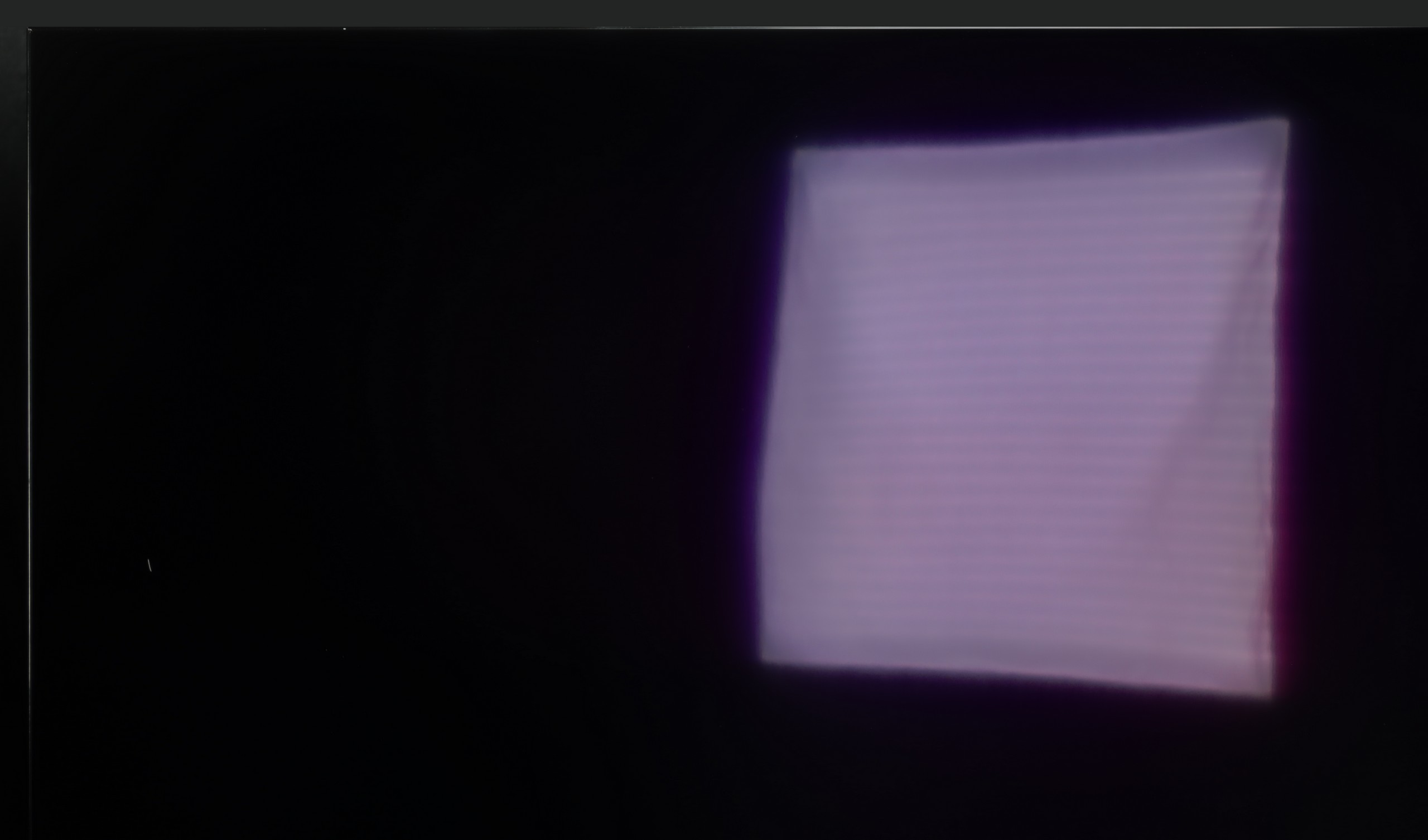
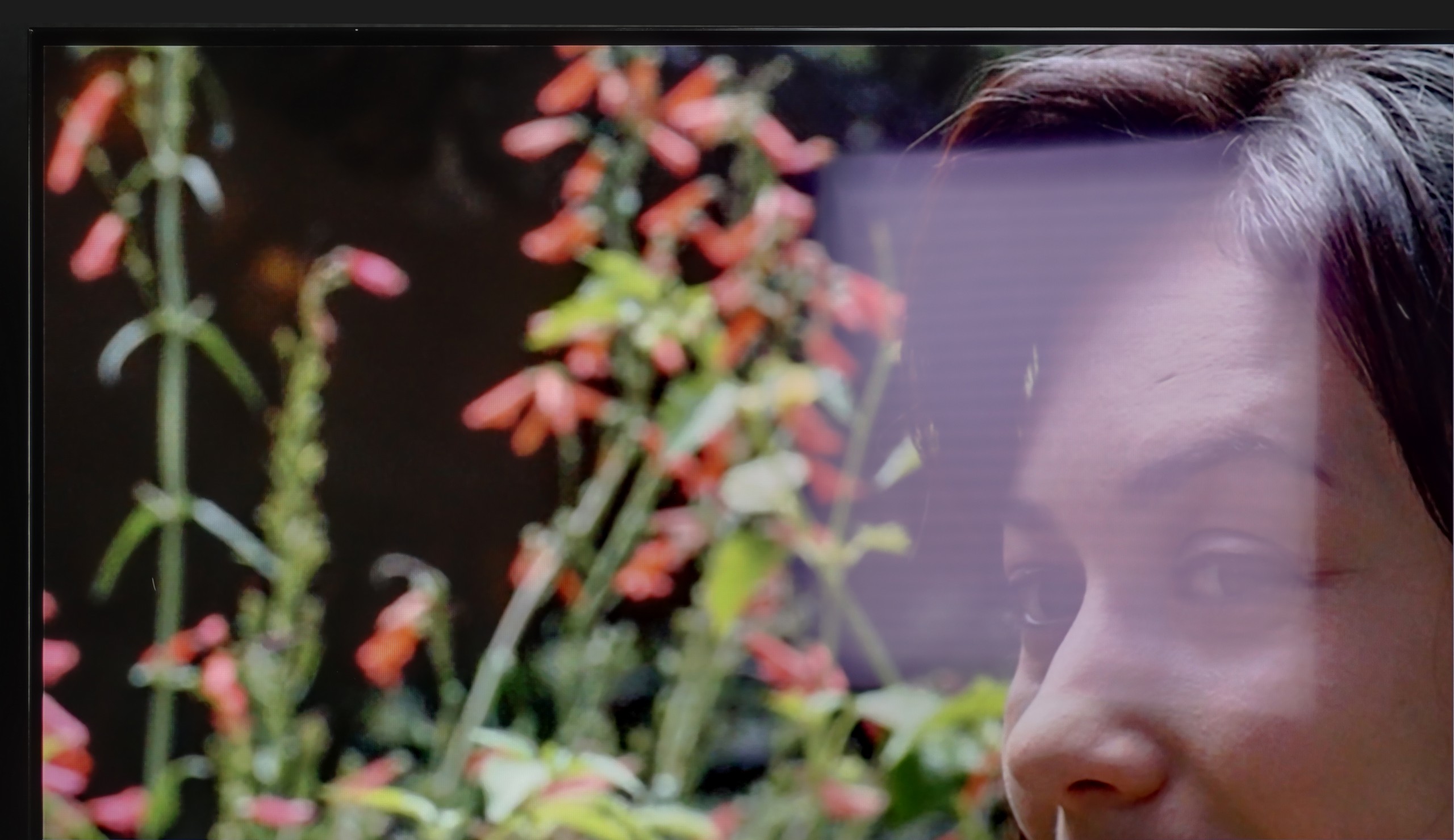
Panel finish: Satin
Reflection suppression: Decent
Black levels during daytime: Very Good
We must state clearly that working in a brightly lit room is not the strong point of the S85F. We are dealing with a rather moderately bright OLED panel here. Our measurements indicated that the average screen brightness in "TV" mode hovers around 300 nits. For some users, this may be a value that is too low, particularly in rooms with a lot of daylight. Of course, this television would be perfect for moderately bright living rooms. However, it is not a model we would recommend for exceptionally bright, heavily sunlit interiors. This problem is exacerbated by the anti-reflective coating applied. We noticed that it does not suppress reflections from the surroundings as effectively as the version with the QD-OLED panel, especially when direct sunlight hits the screen.
Panel brightness
Average luminance SDR
Samsung S85F (WOLED): 305 cd/m2
SAMSUNG S85F - TV features
7.3/10
System: Tizen
System performance: Good
- HDMI inputs: 0 x HDMI 2.0, 4 x HDMI 2.1 48Gbps
- Other inputs: Toslink (Optical audio)
- Outputs: Toslink (Optical audio), eARC (HDMI), ARC (HDMI)
- Network Interfaces: Wi-Fi 2.4GHz, Wi-Fi 5GHz, Ethernet (LAN) 100Mbps
- TV reception: DVB-T, DVB-T2, DVB-S, DVB-S2, DVB-C
Classic features:
Recording to USB (terrestrial TV): No
Recording programming: No
Picture in Picture (PiP): No
RF remote control (no need to aim at the screen): RF
Backlit remote control: No
Teletext: Yes
Audio only mode: Yes
Bluetooth headphones support: Yes
Simultaneous Bluetooth headphones & TV audio: Yes
Smart features:
AirPlay: Yes
Screen mirroring (Windows Miracast): Yes
Voice search: Yes
Voice search in native language: Yes
Ability to connect a keyboard and mouse: Yes








Features of the Classic S85F Television
The S85F was not really designed with fans of traditional television in mind. We won’t find the PiP feature here (which is somewhat surprising, as Samsung usually offers it) nor the ability to record programmes onto USB from the built-in tuners. Fortunately, the basics are there – teletext and a clear channel guide – so this is perfectly sufficient for everyday viewing. The included remote, although simple at first glance and lacking a number pad, allows control of multiple devices. This way, when connecting a Canal+ decoder, you won't need to have two remotes on the table – one from the television will suffice.
SmartTV S85F: Tizen
The smart part is a completely different story. Tizen is one of the most advanced operating systems in televisions. It operates smoothly and supports all popular internet features – from screen mirroring, to AirPlay, to voice search. The strongest point of Tizen is its integration with the SmartThings app, which can serve as a control centre for the entire home. Of course, like any closed system, Tizen has its limitations – for example, it has a smaller library of applications than GoogleTV. However, looking at the current list of available applications, it is hard to point out anything that might actually be missing.
Sound connection options
HDMI audio:
Other audio outputs:
Toslink: Yes
Wireless audio:
Bluetooth: Yes
Samsung Q-Symphony (Speaker extension): Yes
Supported audio formats (external HDMI eARC audio):
Dolby Digital Plus 7.1: Yes
Dolby True HD 7.1: No
Dolby Atmos in Dolby Digital Plus (JOC): Yes
Dolby Atmos in Dolby True HD: No
DTS:X in DTS-HD MA: No
DTS-HD Master Audio: No
Senior accessibility
Numeric keyboard on TV: No
Font size adjustment: Yes
Audio description: Yes
SAMSUNG S85F - Apps
8.7/10























SAMSUNG S85F - Playing files from USB
9.1/10

| Maximum photo resolution: | Supported photo formats: |
|---|---|
The built-in media player in the S85F performs excellently – practically everything you put on a pendrive or hard drive will be played without the slightest problem. Small shortcomings occur only in the support of some less popular photo formats, but for the vast majority of you, this will be more than sufficient. Therefore, it can be confidently said that the built-in player is more than solid for home use.
SAMSUNG S85F - Sound
7.2/10
80dB
Maximum volume
Supported codecs
(TV speakers)
Dolby Digital Plus 7.1
Dolby True HD 7.1
Dolby Atmos in Dolby Digital Plus (JOC)
Dolby Atmos in Dolby True HD
DTS:X in DTS-HD MA
DTS-HD Master Audio
The built-in speakers with 20 W power on paper may not seem impressive, but in practice, the S85F can surprise. It sounds really pleasant, and at times you can even catch a hint of bass, which is not a given in this class of speakers. The television does not support the DTS format, which has unfortunately become the standard for most manufacturers by 2025. A nice surprise, however, is the support for Dolby Atmos. Of course, to talk about "spatial" sound with two speakers placed at the bottom of the casing would be a slight exaggeration, but it is good that Samsung offers such a feature in this model at all.
Sound Quality Test:
Acoustic Measurements
No acoustic data
SAMSUNG S85F - Panel details
Software version during testing: T-PTMFDEUC-0090-1110.7
Panel uniformity and thermal imaging:

Founder and originator of the "ChooseTV" portal

Journalist, reviewer, and columnist for the "ChooseTV" portal
See articles related to Samsung S85F (WOLED):
12/1/2025
11/25/2025
10/22/2025









